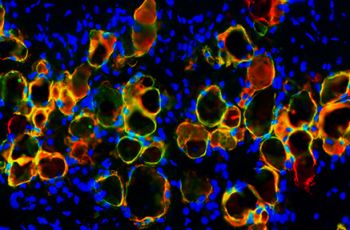Nanotechnology delivery systems may be an innovative and effective approach to delivering cannabinoids for skin care, according to a team from the Department of Dermatology at the George Washington University School of Medicine and Health Sciences. Research fellow Nagasai Adusumilli, medical assistant Elizabeth Hazuka, and Adam Friedman, MD, chair and professor, examined evidence related to the benefits and challenges of using cannabinoids as a potential treatment for dermatologic conditions.
The endocannabinoid system, known as ECS, is involved in controlling many biological systems and processes. The skin relies heavily on the rich ECS network for proper functioning, and emerging research is finding that activation of this network by human, plant, and even synthetic cannabinoids can have impressive anti-inflammatory and anti-tumor responses, highlighting their potential to manage skin conditions such as skin cancer, lupus, psoriasis, and eczema.
“Even though the field is in its infancy, it is clear that cannabinoids have tremendous medical potential. Translating our understanding to the bedside, however, has been limited by significant variations in bioavailability, pharmacokinetics, skin permeability, and some ingredients in formulations,” said Friedman. “Purposeful drug delivery technologies, like nanoparticles, may be able to overcome some of these barriers.”
Nano-sized drug delivery strategies, the research team believes, can also set the foundation for well-designed clinical trials to determine the safety and efficacy of cannabinoids. To bolster their determination, the team reviewed the latest evidence for cannabinoid use in combating skin disease, highlighted the challenges of formulating cannabinoids, and noted how the success of nanomedicine across therapeutic fields can translate to novel nano-cannabinoid therapeutics in dermatology.
“Our own experiences utilizing nanoformulations for the delivery of cannabinoids — for example, the endocannabinoid anadamide for the treatment of cutaneous lupus — have underscored the importance of meaningful drug delivery,” Friedman said. “We want to move cannabinoid science forward, elucidating the biology and mechanism while simultaneously prioritizing the best possible approach to translating the evidence for patient care.”
Read the review, “Nanotechnology To Deliver Cannabinoids in Dermatology,” in the June 2021 edition of Precision Nanomedicine.


